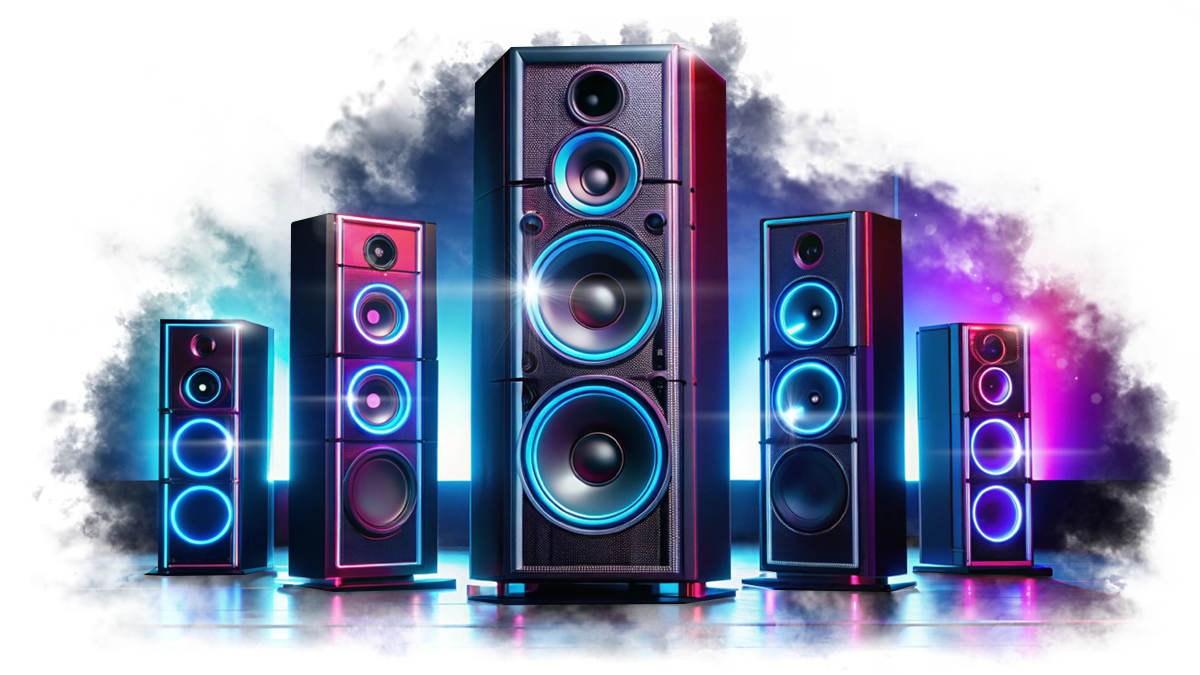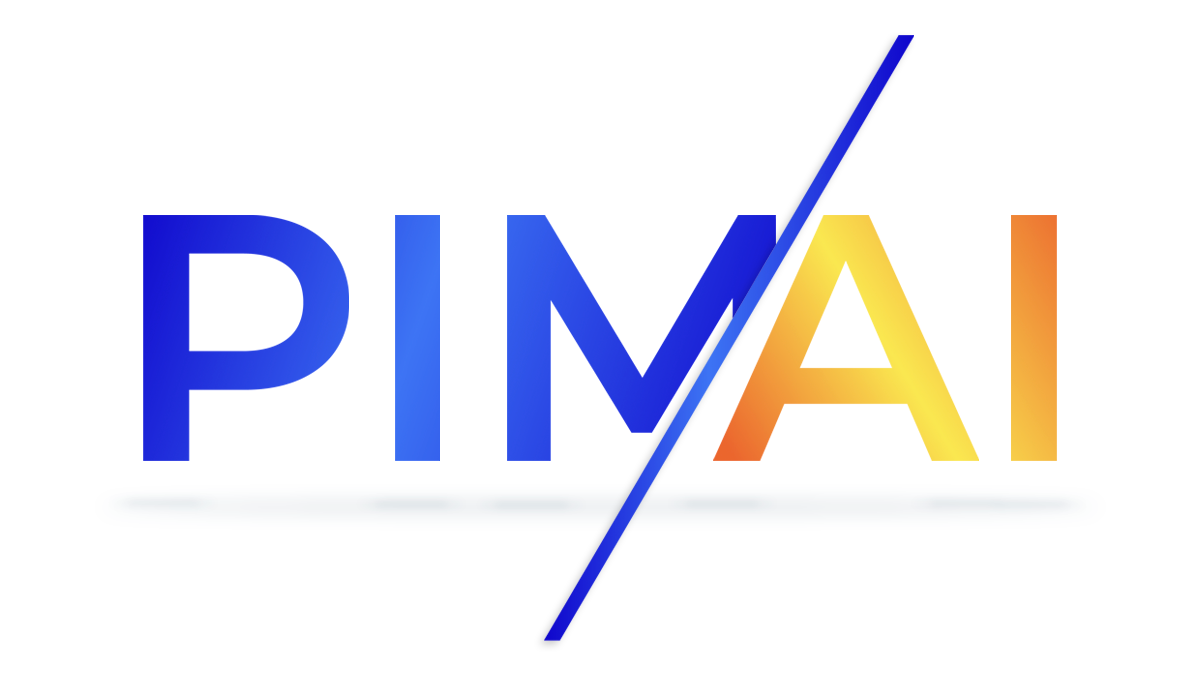18 Types of Product Information for eCommerce (with Examples)

When it comes to product information, it's easy to feel a little lost. Whether you are a seasoned retailer or just entering the e-commerce world, understanding the many different types of product information and their purpose can be a real challenge.
That's why we are here to help.
In this article, we'll introduce you to the 18 types of product information typically found on eCommerce websites and online product pages that every retailer needs to know. We'll also give you examples for each type to make it easier to understand.
But before we jump in, let us take a moment to define exactly what product information is and why it's so important to customers and retailers alike.
What Is Product Information?
Product information is the critical detail that informs and educates the customer about what a company has to offer, be it a product or a service.
Every piece of product information — from basic elements like the product name and description to more specific details like size and specifications — serves a purpose: to highlight a particular aspect of the product.
Taken together, product information forms a compelling and well-crafted product story that conveys a comprehensive and holistic understanding of what the product is all about.
This information is typically found on product packaging, product inserts and product labels, but can also be integrated into various marketing materials such as brochures, product information sheets, product catalogs and online product detail pages.
Whether through compelling descriptions, captivating visuals, informative videos or customer testimonials, product information forms the basis for effective marketing campaigns.
Is Product Information Important?
The importance of thorough and helpful product information on product pages should not be underestimated.
Imagine buying a ladies bag online and landing on this page.
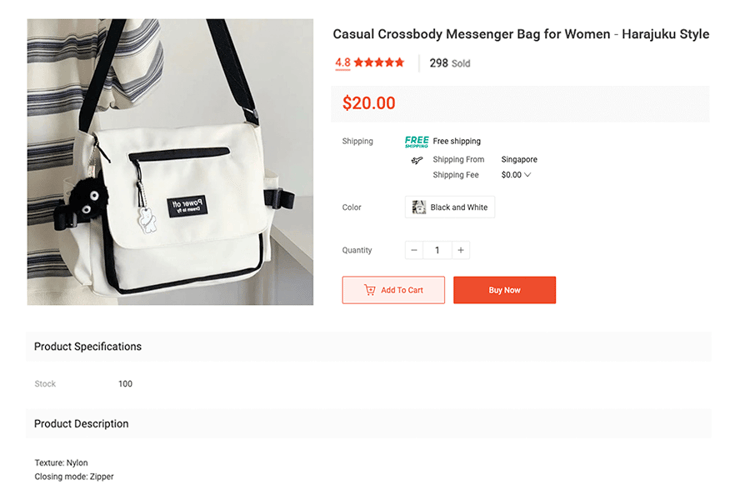
Given the limited product information, how confident are you that this bag is what you are looking for?
You probably have a lot of unanswered questions. How big is this bag? What does it look like from other angles? Is there at least a description of its features? These are all important questions that are not answered on this product page. Therefore, it is difficult to properly judge whether this bag is suitable for you.
If customers cannot find quality information about key features, functions, and suitability for their needs, or the information provided is poorly organized, lacks detail, or is irrelevant, they are unlikely to complete the purchase. However, if they have all the information they need right at their fingertips, they will have the confidence to buy.
In today's crowded eCommerce landscape, where shoppers can find your competitors' products in just a few clicks, you need to give them a reason to buy from you, not them.
As a retailer, having the right product information on product pages is how you drive online sales and also improve the visibility of your products in search engine results. That is why you should make your products easy to understand so customers feel well-informed and confident enough to buy from you.
Types of Product Information
Now that we have established the significance of product information, let’s take a look at the different types of product information retailers can and should publish about their offerings.
Depending on your audience, resources, and goals, you can make the most appropriate selection of product information to add to your content arsenal.
Name
It goes without saying that the product name is one of the most important, if not the most important, identifier of the product.
In fact, the name alone can influence consumer choices and have a great impact on the success of the product itself.
If the product name catches the customer’s interest, they will take a closer look at the product and learn more about what it has to offer. However, if it doesn't catch their attention, they may overlook the product altogether and consider it unremarkable or irrelevant.
So if your product is being sold in a crowded market alongside many other competing products, you need every advantage you can get to make your product stand out from the crowd and appeal to your customers.
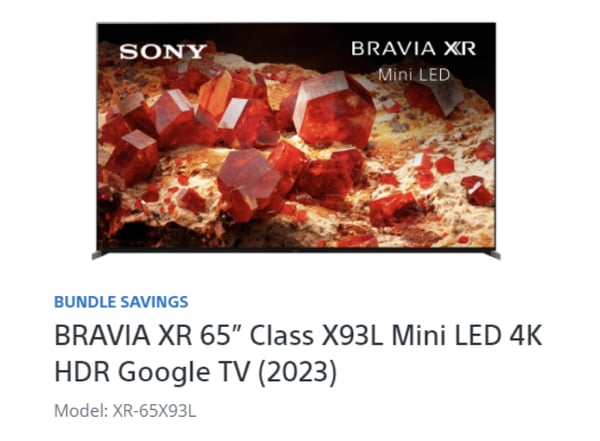
Source: Sony
If you want your product to resonate well with your target customers, you need to follow best practices, such as keeping the name simple and memorable, and making sure it's easy to pronounce and understand.
Description
After the product name, the product description is usually what customers read next when they want to learn more about the product.
The product description is a key element that should be present on every product page. However, on physical product packaging, where space is often limited, manufacturers often omit it or use only a one-liner or a few keywords to give customers an idea of what the product is about.
The ideal description should include a concise and informative overview that highlights the product's key features, benefits and value proposition. This is your chance to highlight the product's unique selling points and convince customers to buy your product.
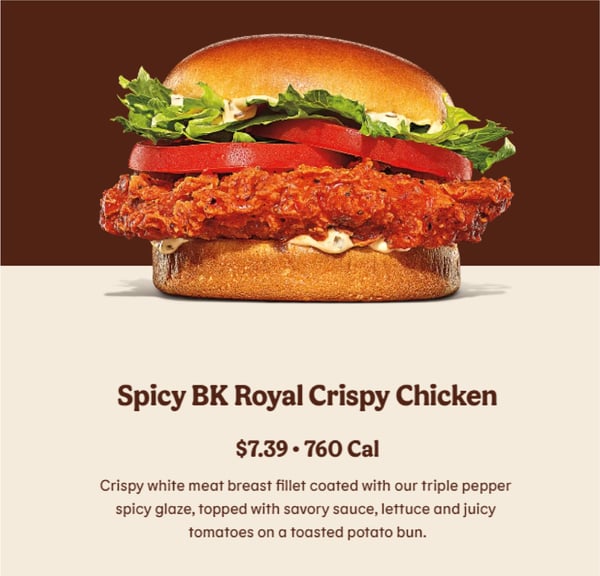
Source: Burger King
If you need support creating engaging product descriptions, see how much you can save with AI automation.
Discover the cost difference between manual product data enrichment and AI-driven enrichment.
Number of products requiring description
Average Word Count per Product Description
Manual/Human Copywriting Cost per Word
Your Current Cost Estimation:
$ for human copywriting of words to create product descriptions.
You are just one step away from discovering how much you can save with AI in PIM!
The AI calculates costs based on the number of input and output tokens, with each token representing approximately four characters. The cost per token varies depending on the model used.
Basic GPT Model: Less powerful, lower cost, produces simpler or less detailed responses, and might be faster due to smaller size or fewer computations.
Advanced AI Model: More powerful, higher cost, produces higher-quality and more detailed responses, but could be slower because of increased computational complexity.
Pricing for AI models often decreases with each new release, making advanced processing more cost-effective over time.
Bluestone PIM AI Enrich estimation
- With Basic AI model $x.xx
- With advanced AI model $x.xx
Specification
The name and description of the product alone can only tell you so much, but sometimes shoppers still cannot get an accurate picture of how the product works or what it does from this brief information.
In this case, a detailed listing of key product specifications helps fill in the gaps.
Product specifications provide comprehensive information on the technical aspects or finer details of the product, such as specific attributes, features, or functionalities—things like dimensions, country of origin/manufacture, and performance ratings—and give the customer a comprehensive understanding of its actual capabilities.
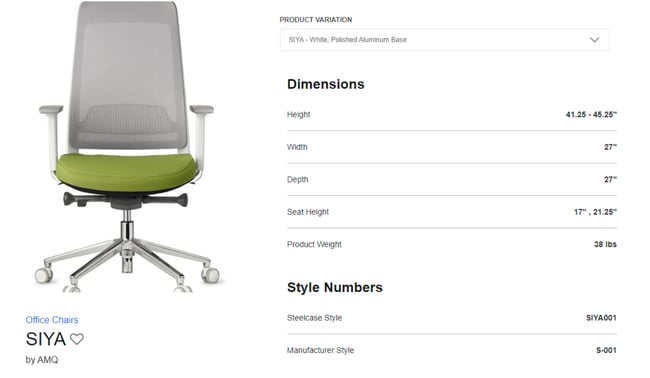
Source: Steelcase
Taking the time to thoroughly detail product specifications not only empowers customers, but also sets your offering apart from that of your competitors who only half-heartedly describe their products and are done with it.
So take the time to fully disclose the technical specifications; it's beneficial for both your customers and your business.
Features
Just like specifications, product features are one of the most important pieces of information that customers look for when evaluating a product.
Product features highlight the special characteristics and functions that make the product unique and desirable. They can range from design elements and performance enhancements to convenience factors and special features that can be tailored to the customer's needs.
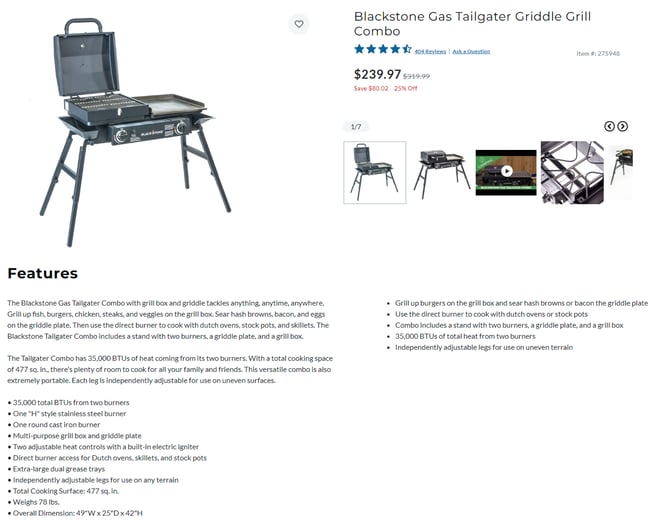
Source: Camping World
So what are the features of your product that your customers are looking for? Introduce them and emphasize the value each feature brings.
If you can present them in a compelling way, you can make a convincing case for why your customers should choose your product over others on the market.
Benefits
"Features tell, but benefits sell" is a common saying in the marketing industry.
While product features tell the "what" of the product and introduce its functions, product benefits answer the "why" and focus on the positive effects of using the product.
It is the product benefits that really resonate with customers and influence their purchase decisions. After all, customers buy the product not just to use it, but to use it to solve their problems, improve their lives, or fulfill their desires.
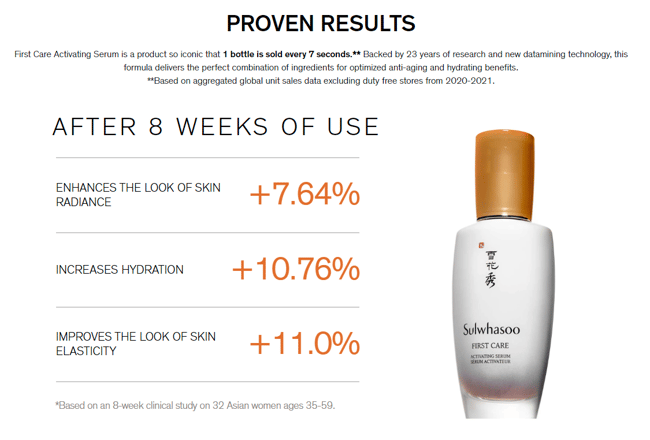
Source: Sulwhasoo
Take the words of Steve Jobs when he introduced the iPod in 2001. He did not talk about the features at the beginning. Instead, he proclaimed the message "1000 songs in your pocket".
That's a short, simple, but powerful message that speaks directly to what customers want.
If you can effectively communicate the positive impact your products have on your customers, you will capture their full imagination and attention.
Learn more about creating the best possible customer experience with our free e-book.

DOWNLOAD FREE E-BOOK
The Art and Science of Customer Experience
"The Art and Science of Customer Experience" e-book shows you how to increase your sales while making your customers happy.
Ingredients or Materials
Have you ever asked yourself: What is the thing I want to buy actually made of?
Whether it is food, clothing or electrical appliances, shoppers appreciate knowing exactly what the products they're looking at are made of. After all, it's only natural to want transparency about the materials and ingredients that make up the products you might bring into your home or put on/in your body.
With this transparency, you can strengthen consumer trust in your brand.
For edible products such as food and cosmetics, the things that make up the item are clearly spelled out as a list of ingredients. Consumers appreciate knowing all ingredients for several important reasons. This allows people to assess potential allergen reactions or dietary compatibility based on the item's ingredients list.
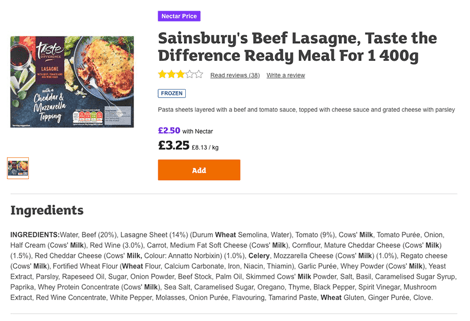
Source: Sainsbury's
In the case of non-edible goods, a list of materials indicates what they are made of. Some products, especially clothing, are made of a combination of different materials. Some retailers make the exact composition transparent by listing the percentage of each material that the product contains.
This level of detail allows consumers to better determine key attributes upfront, such as how durable the item will be, care instructions and how environmentally friendly the various materials are.
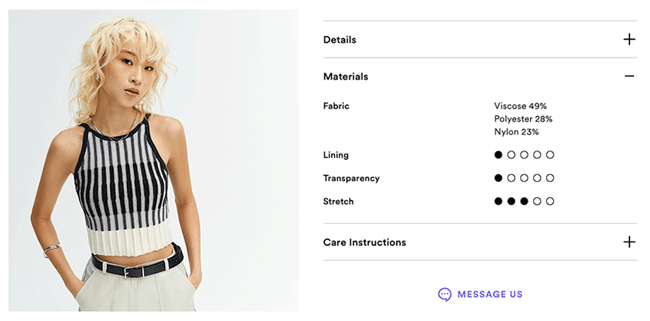
Source: POMELO Fashion
Nutrition Facts
Eating healthy and paying attention to what you fuel your body with is top of mind for many people these days. But it's not always so easy to find out what's really in our food just by looking at it, is it?
That's what nutrition tables are for. Usually published along with the ingredient list, this table breaks down key nutritional information in a simple, easy-to-digest format.
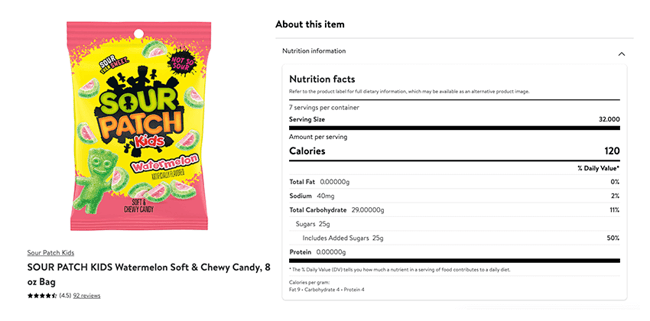 Source: Walmart
Source: Walmart
Got an eye on limiting sugar? Keeping track of calories for a diet? Here you'll find all the important macros like fats, carbs and proteins for a standard serving.
While packaged foods sold in brick-and-mortar stores are required by law to list nutrition information in many countries, the same rules don't apply to online marketplaces. Still, if you sell online, you should take the initiative to provide the full nutritional value to help health-conscious customers and gain their trust.
Whether they want to manage their medical conditions, follow a diet or is simply health-conscious, knowing the nutritional values will help them to pick foods that align with their wellness goals.
And they will be grateful to you for that.
What’s in the Box
While browsing product pages, you have probably come across the "What's in the Box" section, which contains a concise list of accessories and items bundled with the main product.
Thanks to this clever feature, customers know exactly what they will receive in the package.
While the main product takes center stage, the included accessories sweeten the deal and make it even more attractive, especially when customers do not have to buy them separately.
But don't hide the list of included accessories in a long product description that customers might accidentally overlook. Instead, take a cue from established retailers and eCommerce sites like Apple by creating a separate "What's in the Box" section.
This way, the list of accessories clearly stands out and ensures that customers can easily find the information they are looking for.
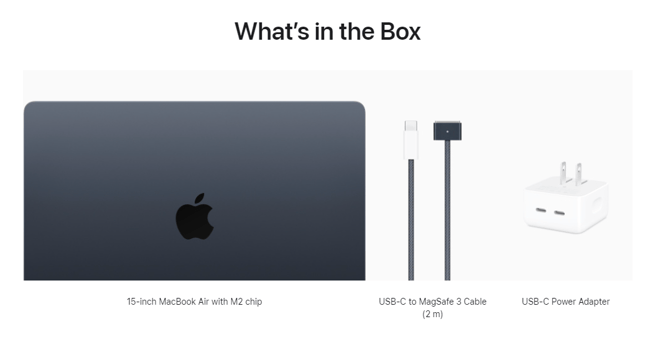
Source: Apple
To make the product even more attractive, you should also include high-quality photos of the accessories or show everything together as a bundle. This visual representation makes the product even more desirable and gives customers a clear picture of what they will receive.
Best-Before or Expiration Date
Packaged consumer goods such as food, beverages, cosmetics and medicines have a common problem — they do not last forever.
After manufacturing, these products naturally begin to deteriorate, affecting their quality and effectiveness. To inform customers of the shelf life, a date mark indicating the best-before or expiration date is printed on the physical product and/or its packaging.
However, they are not displayed on all e-commerce websites and product pages, because not every product has the same date marking, so it can be a bit confusing.
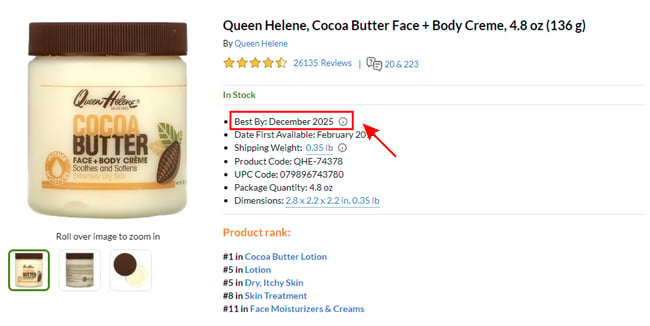
Source: iHerb
To clarify, the best-before date (also known as the use-by or sell-by date) and the expiration date have different meanings. The best-before date indicates the date until which the product is expected to retain its optimal quality, flavor, or potency, while the expiration date indicates when the product may no longer be safe to consume or use.
A whopping 80% of UK consumers misunderstood the meaning of these terms in 2019, resulting in tons of edible food being thrown away prematurely. So it's up to us retailers to get the facts right and help our customers.
Images
Images are an essential part of any product marketing strategy.
They serve as a tangible visual representation that transcends words and allows customers to assess the quality, design and overall esthetics of a product and envision it in their lives, creating a sense of connection and desire before they buy it.
Clear, high-resolution images that show the product from different angles and perspectives are an industry standard. Lifestyle imagery is also often used to show the product in real-life situations, so customers can imagine themselves using and benefiting from the product.
If you want to go one step further, you can invite your customers to explore your products in a 3D environment or via augmented reality, as IKEA and Sephora do.
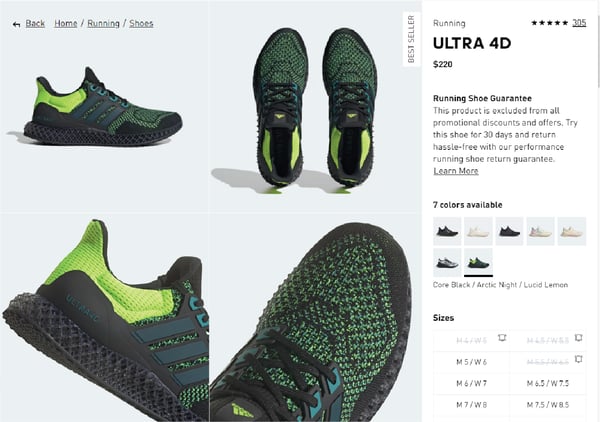
Source: Adidas
Videos
Videos are one of the best ways to connect with customers.
More than 91% of companies already use videos as a marketing tool, so their importance is as clear as day. Thanks to technological advances and the availability of video editing software for beginners, even small businesses with limited resources can harness the power of video to reach and engage their audience.
By bringing the product to life through motion, sound and narration, videos can tell a story that would be impossible with text alone. There are many opportunities you can uncover with video content, including how-to guides, walkthroughs, customer testimonials, and even unboxing products.
The possibilities are endless.
Source: GoPro
Pricing
If the goal of presenting your product is to sell it, then stating the price is undoubtedly a necessary element. After all, once customers have their hearts set on your product, they will be eager to know how much it will cost them.
But no one likes last-minute surprises. That's why unexpected extra costs are one of the main reasons why many customers abandon their shopping carts. In 2023, the average abandonment rate was 69.99%! That's a lot of effort that went to waste.
So mention any costs associated with the product, such as taxes, shipping fees, or other costs.
And if you offer discounts, like free shipping or promotional codes, be sure to highlight them. Everyone loves a good deal, and when you offer incentives like these, the likelihood that a customer will complete their purchase increases significantly.
So don't be afraid to mention your prices — it's an important step in gaining your customers' trust and loyalty.
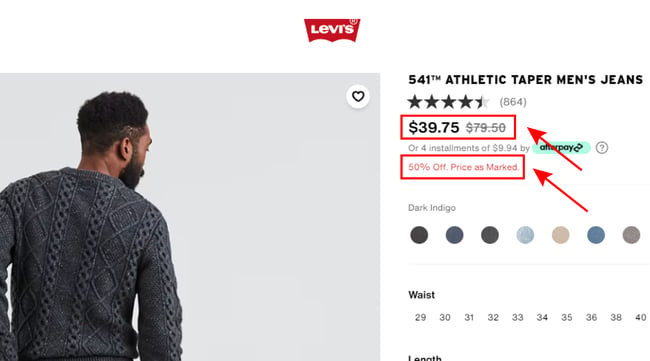
Source: Levi’s
Stock Lvel
Stock level is another piece of product information that is often published along with the price.
Although it is not an essential feature of a product detail page and its absence does not affect the customer experience, some retailers include the remaining stock to inform customers of the limited availability of the product so that they do not buy more than the retailer can supply and risk having to cancel the order.
Indicating remaining stock can also exploit the powerful psychological concept of FOMO, the fear of missing out. When customers see low inventory, it creates a sense of urgency and scarcity that compels them to make a quick purchase decision.
The fear that the product may be sold out creates a sense of exclusivity and motivates customers to act quickly to secure the desired product.
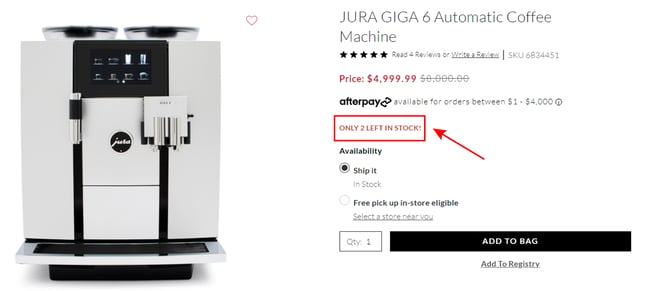
Source: Sur La Table
If you want to take advantage of FOMO and motivate your customers to act quickly, you should display the remaining stock.
FAQ or Q&A
You may think that your product page contains all the necessary information about the product, but customers will always have questions that you cannot anticipate.
If you received a specific question that was asked by multiple customers, then you know that this topic is important to them. By addressing these frequently asked questions (FAQs) in a separate section, you save your customers the trouble of contacting you individually for the same information.
You can also set up a Question and Answer (Q&A) section where your customers can ask their questions and either you or other knowledgeable customers can provide helpful answers. It's like a virtual community of product enthusiasts who love to share their experiences and insights.
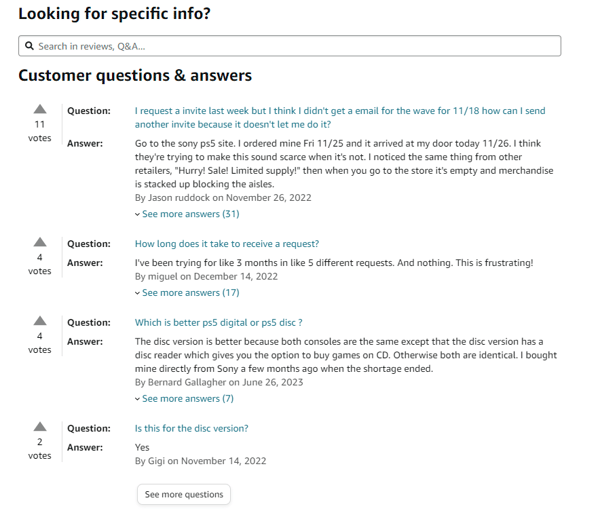
Source: Amazon
Reviews and Ratings
Companies will always try to put their products in the best light, so naturally there will be customers who are skeptical of their product claims and promises. Who wouldn't be? So how can you, as a retailer, inform and reassure your customers?
Customer reviews and ratings are the answer.
Reviews from people who have already purchased and used the product provide an authentic perspective on the product's performance and quality. Accompanying ratings, usually in the form of a numerical score or star rating, provide a quick overview of customer satisfaction and allow customers to gauge overall sentiment toward the product at a glance.
The higher the rating, the more likely it is that customers have had a positive experience.
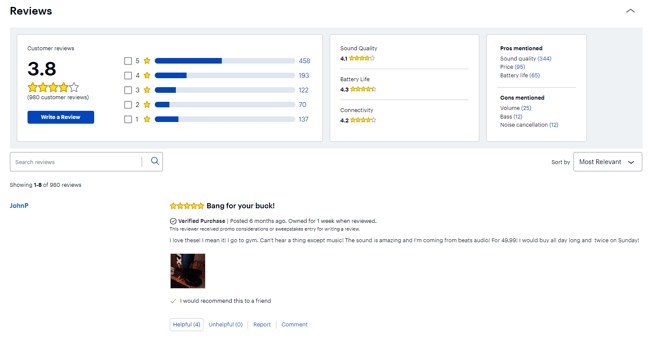
Source: Best Buy
However, retailers need to be aware of the potential skepticism that arises when all reviews are overwhelmingly positive and have a perfect 5-star rating.
Although the pursuit of perfection may seem tempting, customers often consider such reviews "too good to be true" and doubt their authenticity. In fact, reviews with an average star rating between 4.2 and 4.5 had the greatest impact on consumer decisions.
So don't try to delete or suppress negative reviews! Instead, see them as an opportunity to grow your business.
Certifications
When customers deal with a brand they do not know, they may doubt the advertising claims and ask themselves many questions: Is any of what is claimed true? Will it deliver what it promises? Can it stand the test of time?
To eliminate this uncertainty and build trust, there is an effective tool brands can use: Certifications.
Product certifications are official endorsements from authorized organizations that confirm a product's quality, safety, and compliance with industry standards and regulations, such as Fairtrade and Energy Star.
By prominently displaying them on product packaging, websites, and marketing materials, you can instill confidence in potential customers and make it clear that your product has undergone rigorous testing and meets the highest standards.
Consider the certifications a badge of honor and display them with pride!
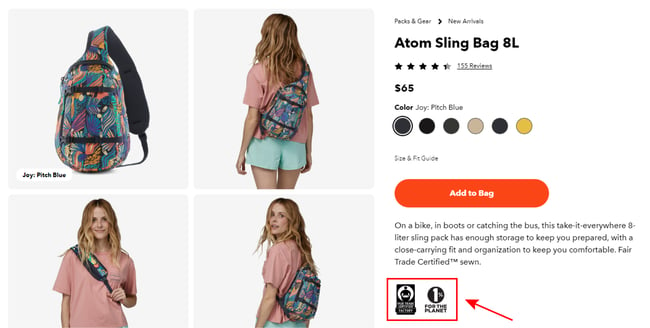
Source: Patagonia
Comparisons
When customers evaluate a product, they are often not only curious about its basic features and functions, but also want to know how it compares to similar offerings.
This is where a product comparison table comes in handy. By showing the product they want alongside other similar products, customers can easily compare prices, specifications and features, while retailers can encourage them to consider higher-end or premium options in the brand's range.
It's a win-win situation that benefits customers and retailers alike.
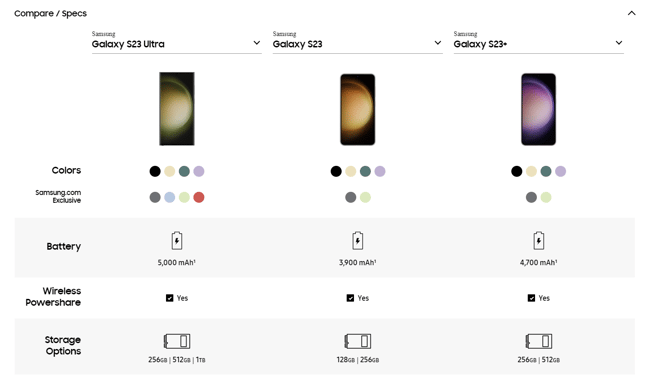
Source: Samsung
Operational Requirements
Knowing what a product can do is one thing, but knowing how to get it to work is another.
Some products, such as electronics and software, must meet certain requirements before they can even be used. These include compatible operating systems, power sources, required accessories, or even software updates.
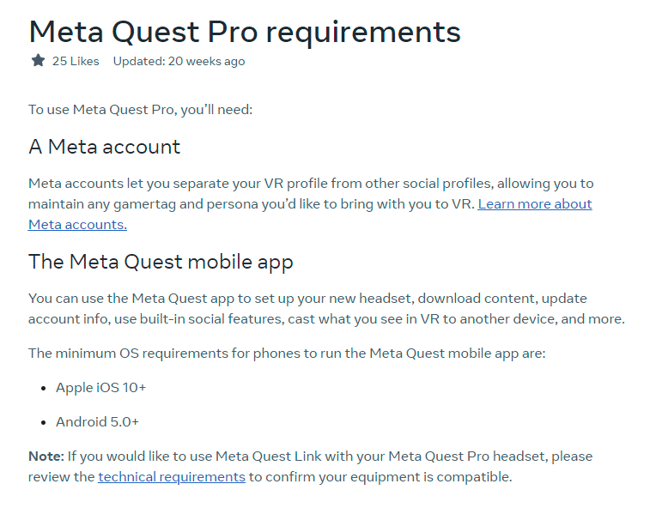
Source: Meta
So before your customers get excited about your product and hit the "buy" button, only to discover they need the right equipment to get it up and running, take a moment to educate them about the operational requirements.
Set up a dedicated section on your website and make it clearly visible so they do not accidentally overlook it. That way, you'll save them from any frustrating surprises later.
Keep the excitement alive!
Struggling to Manage Your Catalog of Product Information? Use a PIM Solution!
When it comes to managing a ton of product information, it's much easier and more efficient if you have the right tools at your fingertips. Let's face it, it's a nightmare to dig through multiple Excel spreadsheets to find the product information you need, manually edit all the data, or upload the same catalog to all channels every time it is updated.
However, a Product Information Management (PIM) solution can simplify this process so you can spend less time working with product information and focus on making more, better, and faster sales.
It's a secret weapon for retailers; it's how major retailers like Walmart have done it with their massive catalog of over 46 million SKUs!
Want to learn more about Bluestone PIM and how it can help your business leverage its catalog of product information to its fullest potential? Schedule a no-obligation consultation with our friendly advisors or reserve a demo to see all of Bluestone PIM 's features.
See AI-powered PIM in action
Talk to our experts today and discover how Bluestone PIM can address your needs.
Editor’s note: This post was originally published in July 2023 and has been updated with the latest information.




